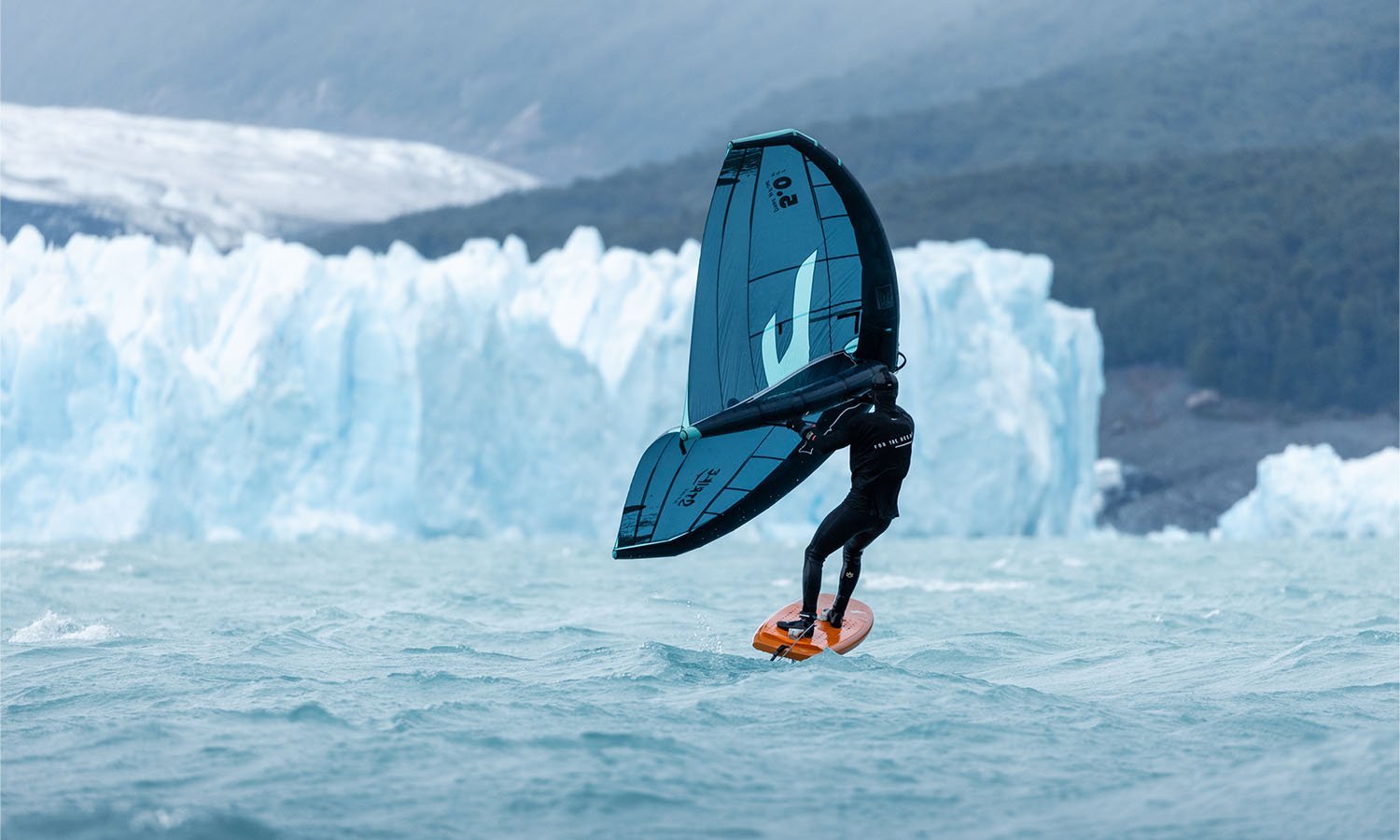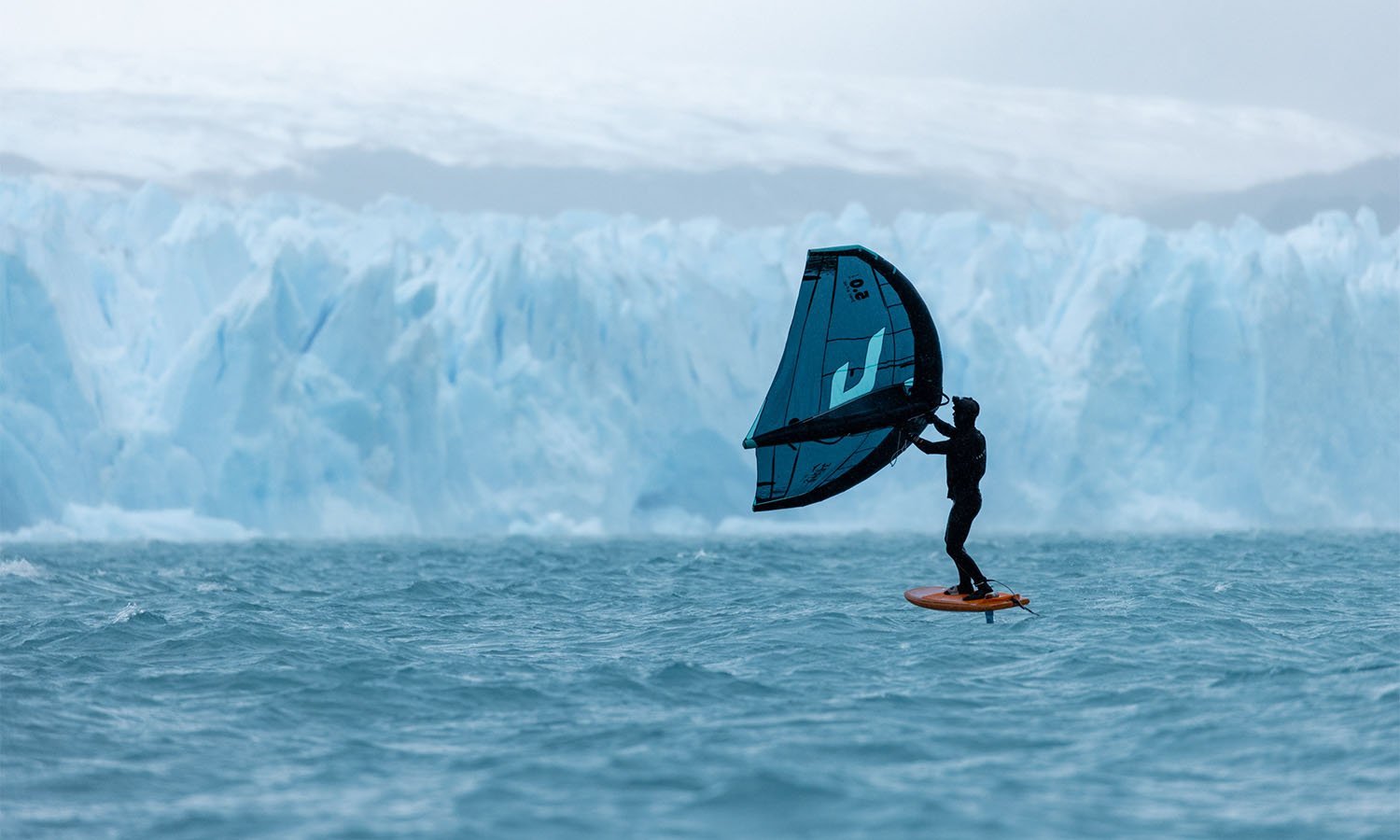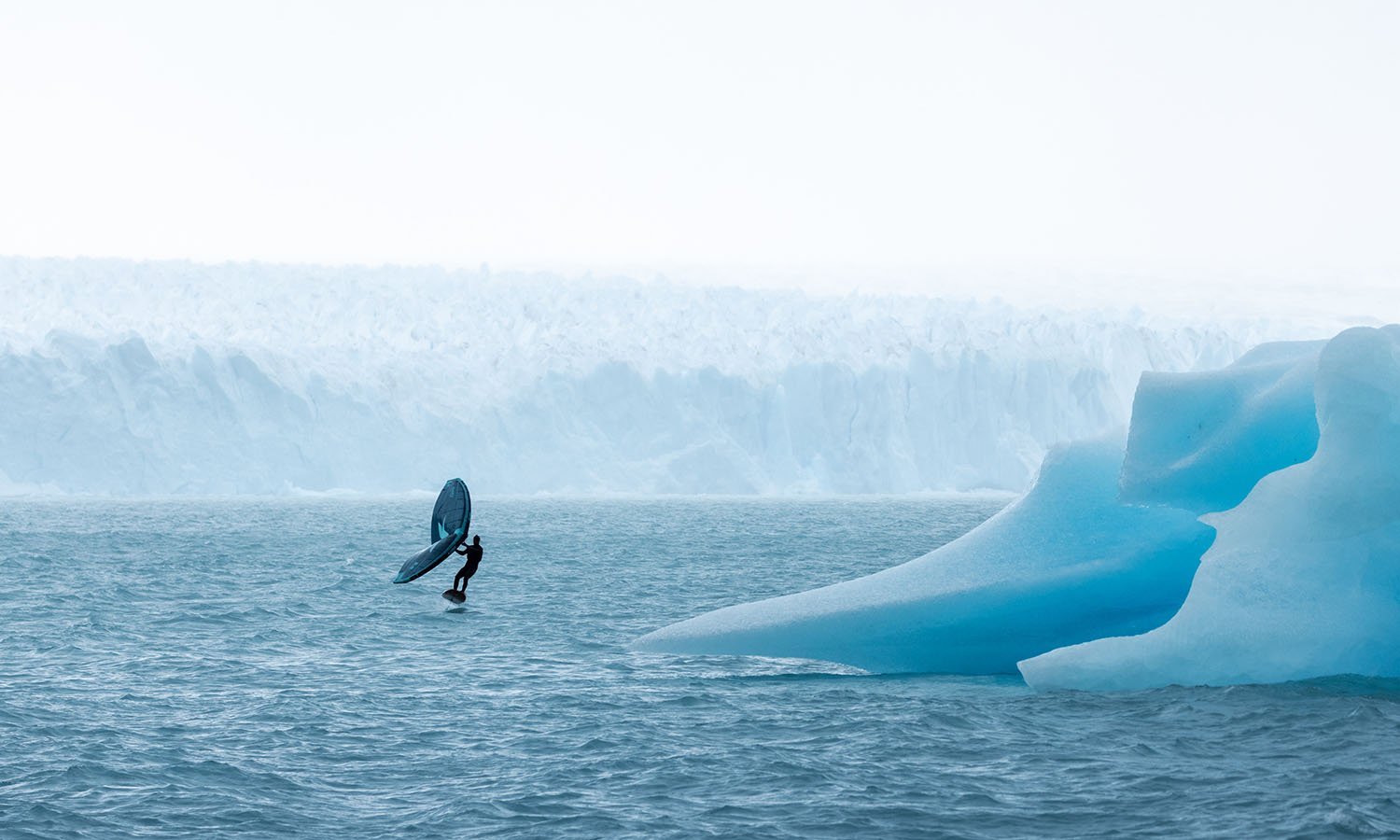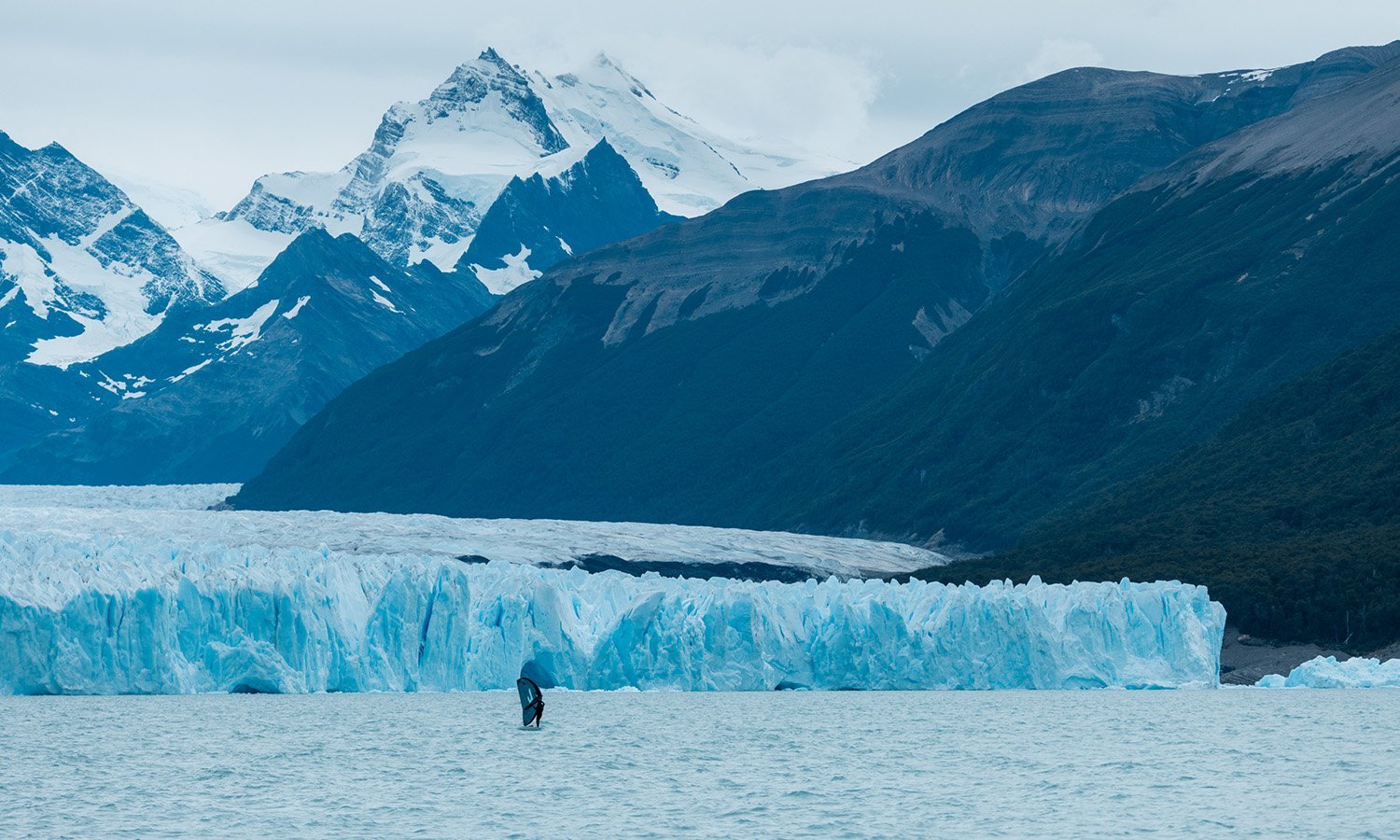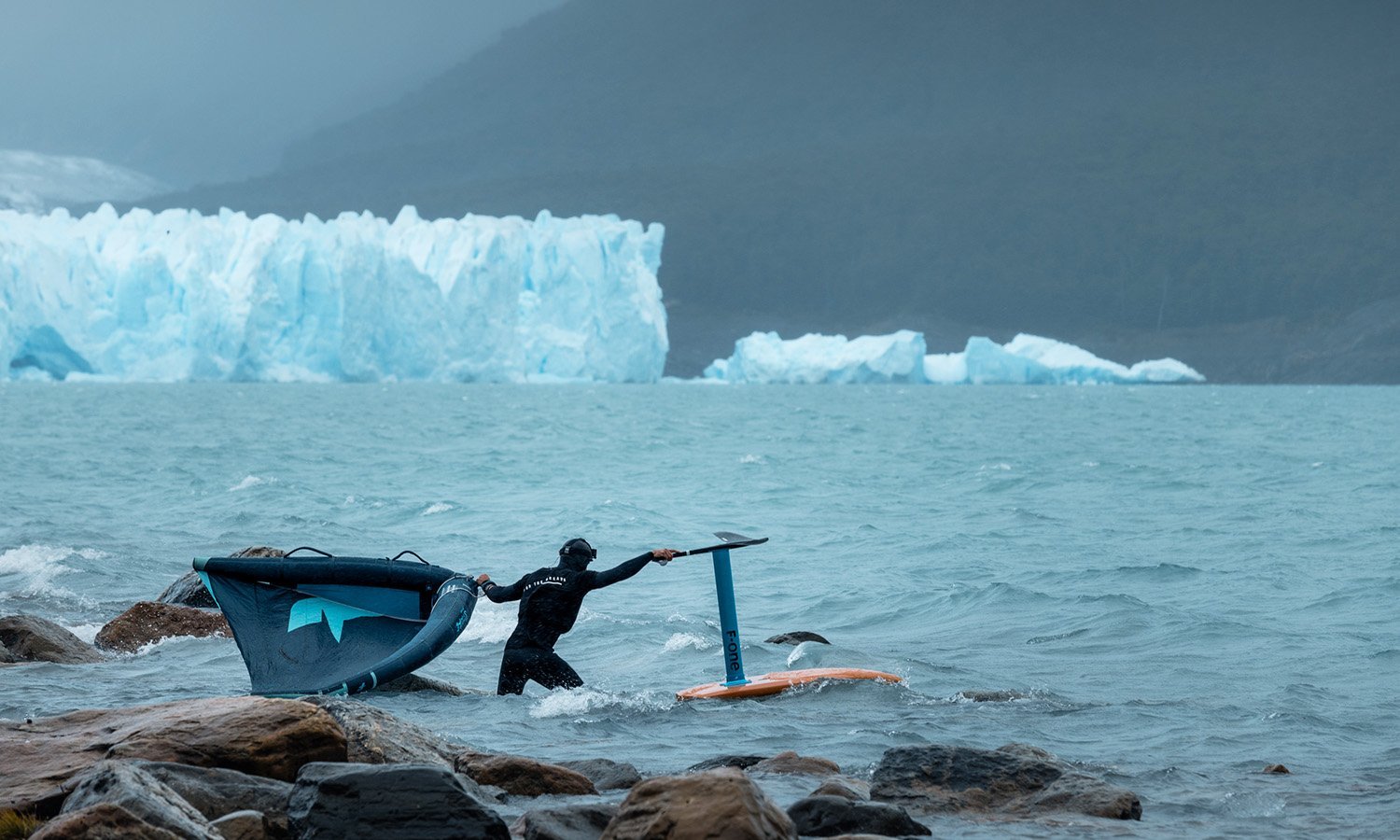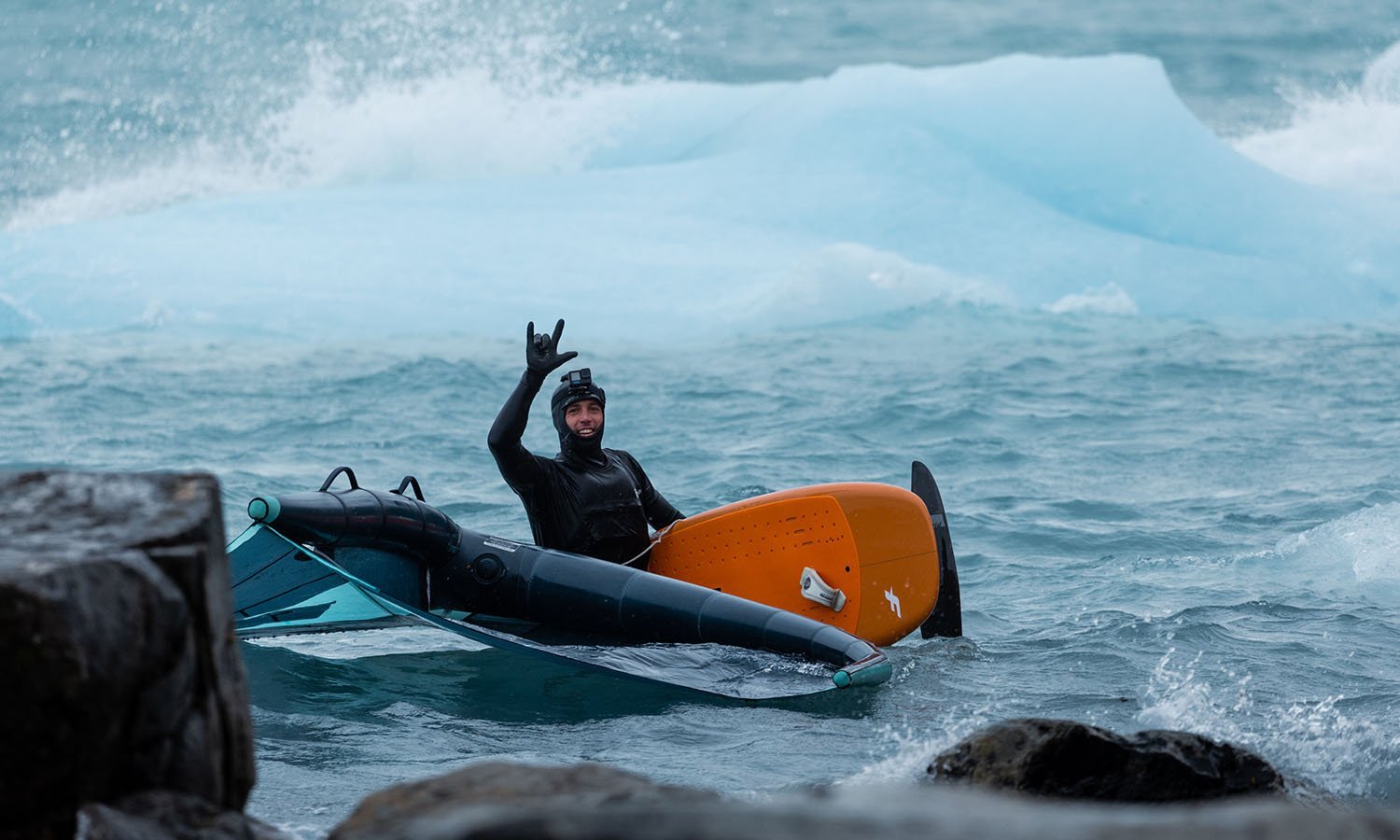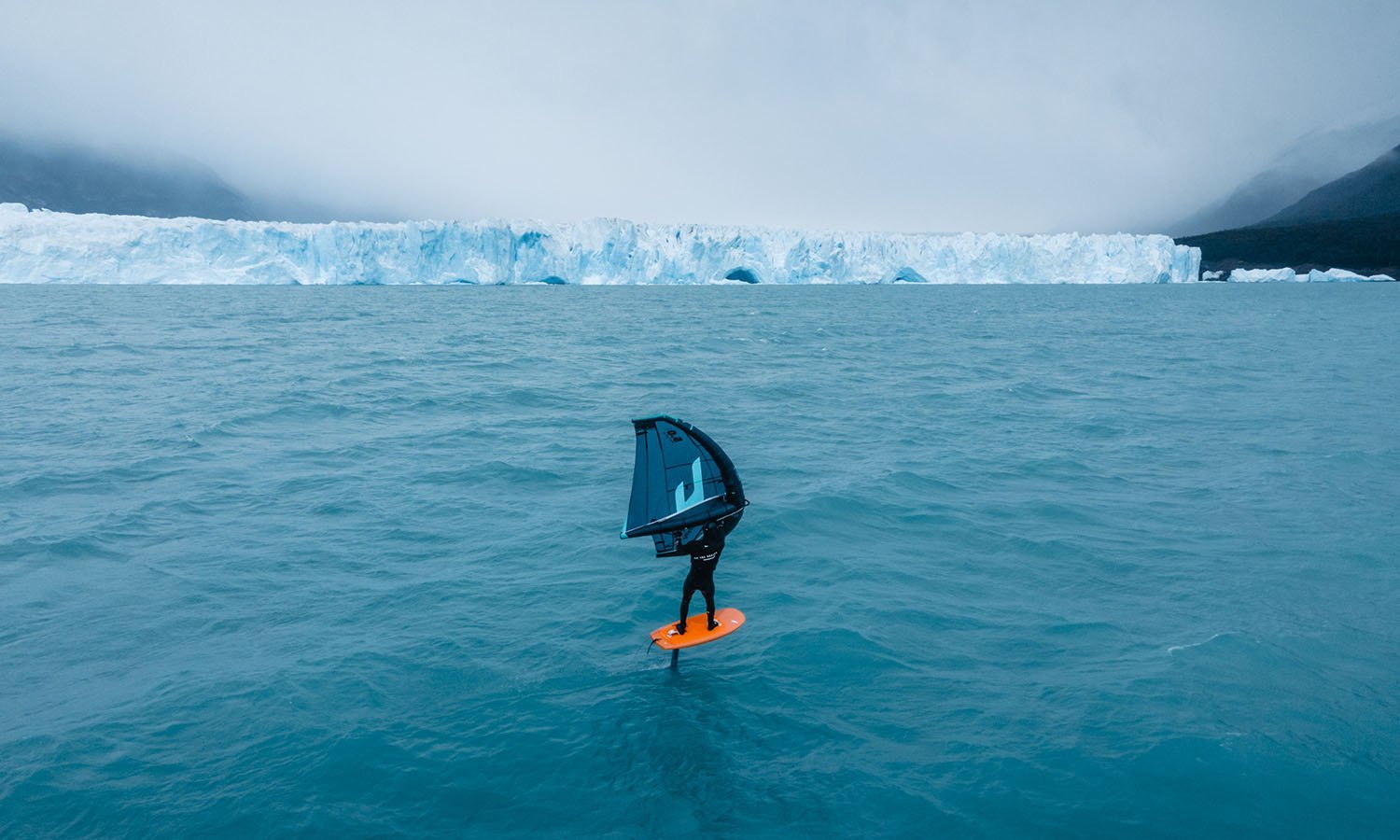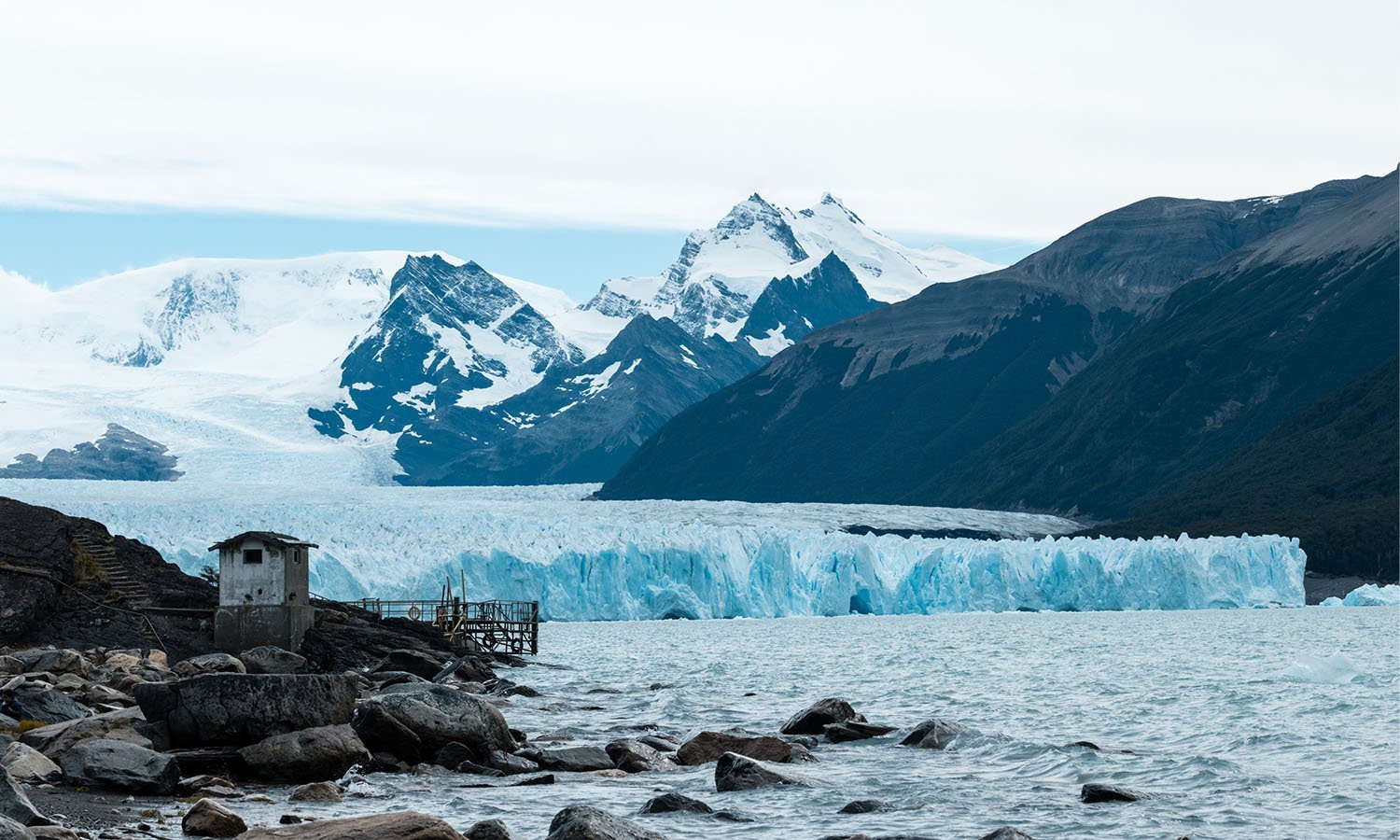Face to Face
To highlight the beauty, fragility and connections that link glaciers to river and ocean ecosystems, Parley Argentina coordinator Yago Lange set out to foil surf along the massive face of the Perito Moreno glacier in Patagonia
In a world’s first, Parley Argentina coordinator and former Olympic sailor Yago Lange recently became the first person ever to foil surf along the face of Patagonia’s iconic Perito Moreno Glacier. More than just an insanely cold adventure, the dangerous solo mission in near-freezing water was intended to highlight the fragility of the world’s glaciers in the face of climate change – and succeeded with extensive social media and press coverage in Argentina and beyond.
Fittingly, Yago’s expedition took place the same week Argentina and neighboring countries were facing record-setting heatwaves, with hottest-ever temperatures up to 45°C recorded in some towns. Despite this, and the general upward trend of global temperatures, Perito Moreno is one of the few glaciers that’s actually stable – a rare exception in a world where most glaciers are shrinking, retreating and even disappearing completely. We caught up with Yago to learn more about Perito Moreno, his intrepid excursion towards the towering ice face – and some of the other work the team did during the expedition.
“When you protect nature, nature protects you. I feel honored to be in contact with the glacier and to be able to speak out for the glacier.”
Yago Lange — Parley Argentina
Q & A
Tell us a bit about the glacier.
Perito Moreno is found on the Pacific side of Argentina inside Parque Nacional Los Glaciares. It’s absolutely huge, covering 250 square kilometers. As a comparison, that’s bigger than the entire city of Buenos Aires. The lagoon-facing walls of the glacier are 60 meters tall at the waterline, but they go deeper – to 150 meters.
What's the area like – the glacier feeds a river?
So you have the glacier, then you have Lago Argentino, which is connected to the Santa Cruz River. It’s on the Pacific side of Argentina, but water from the glacier flows east all the way to the Atlantic Ocean, crossing the entire country. This area of Patagonia is incredible, I want to say like a kid, it's kind of like dinosaur land. It's wild, massive. Everything is huge, and it's a totally different landscape than what we are used to. In the mountains, you have the glaciers, you have the snow, you have these lakes with beautiful colors – different color than any other lakes. Beyond the mountains you have more of a desert landscape. Kind of like craters on the Moon.
Beyond climate change, what threats is this ecosystem facing?
The glacier is fully connected to the ocean right now, but there are two dam projects being built, and there is a lot of activism around to ban the dam. If the river flow is blocked, it will collapse the whole ecosystem there because the dams takes a lot of water and, yes, stop the river current. For me, it's quite heartbreaking.
You’ve been leading a lot of work with Parley in Patagonia – from remote cleanups to rewilding projects. Are you seeing climate impacts in the region?
You know when you learn from viewing with your own eyes? This is what I see when I travel in Patagonia – how this climate crisis and how these industries are affecting this beautiful landscape, and specifically I would say water. Water, you see, it's not just for the marine ecosystem or for the little animals in nature, it's more as well for the production of food, for the people itself who live out of water. In the mountains, there are more and more bush fires due to the dryness. So, yeah, it's really connected to everything.
On this trip, you also did some educational work?
Yes, although the educational program was beforehand. We prepared a project about the glacier with 60 kids from two different classes. We spoke about the possibility of myself sailing the glacier and how we can send a positive environmental message – and what should we focus about the glaciers. With both classrooms, we investigated, we researched, we discussed the glaciers. This was really the starting part of the project. More recently I gave a talk to 10 youth sailors – more specifically talking about, how as sailors, we can be more responsible and more aware of plastic pollution and how our decisions and our habits can help avoid plastic. I was not able to run a cleanup at the glacier because it's a National Park, but I found plastic debris after foiling along the glacier, when I came ashore. it was a clear message for, personally, myself, plastic is everywhere.
You’ve also been visiting some pretty remote dumpsites out in Patagonia – can you tell us about the challenges communities face?
The dumpsites, what we do, we visit open-air sites all around Patagonia. We have pictures and we've been documenting the realities. Those places are so far away. It's really hard, with all the logistics, to find a solution. Communities do not have all the resources, there is no recycling there so then there’s a lot of logistics involved to take it out from there. In Argentina, we also have more than 5,000 illegal dumpsites, and many of these are create methane gas, which impacts climate change. Although we are far away from the glacier, all these dumpsites, they are affecting the ice, the snow, the atmosphere. My view is that if we reduce the trash we create, we separate it, we avoid plastic – then we are all helping glacier itself.
Going back to Perito Moreno, how did you train?
I trained a lot! In winter, in the place where I live, the conditions are very tough in the sea with a lot of wind – and it's quite a cold weather. So mentally, that prepared me a lot. The experience through Olympic sailing and my Olympic career in terms of preparation, in terms of the way I sail, I applied in here. We wanted to do this responsibly, so a lot of preparation also went into getting special permission to do this.
How close did you get?
You're allowed to get to 300 meters away – because when parts of glacier break off the ice can be dangerous. In the water there were also some icebergs, but the main issue was the cold wind, because the wind was coming from the mountain. To really relate, it's like when you are skiing in the mountains and you take the chairlift. I was having this feeling because the wind was so cold.
Do you feel different after accomplishing this mission?
Now, I feel connected to the glacier. It was a special moment for me, where still now I feel the power. I am responsible for what I've done, and I have a responsibility to give back to the glacier, an opportunity to leave it to me to sail there. It's when you protect nature, nature protects you. That's something that I feel honored to be in contact with the glacier and to be able to speak out for the glacier.
All photos by Marko Magister

